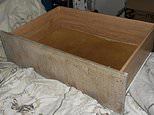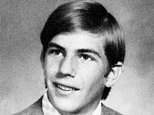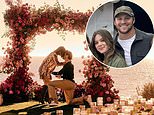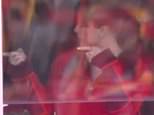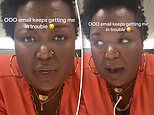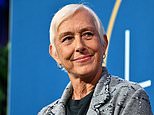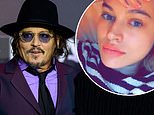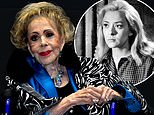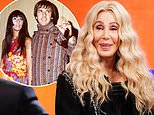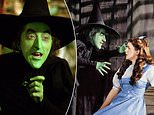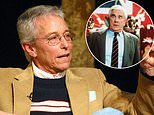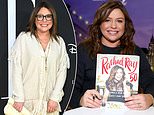Judy Garland's traumatic life: How Wizard of Oz star was starved, exploited and given diet pills aged TEN - and dubbed her mother the 'REAL Wicked Witch of the West'
- Esteemed American actress Judy Garland died aged 47 in 1969 in London
- READ MORE: Wicked goes woke! New film looks worlds away from original - with drunken munchkins reinvented and a squeaky clean cast brought in
She was the glittering starlet of Hollywood's Golden Era, but behind closed doors, Judy Garland suffered a life full of hardships.
The Minnesota-born actress, born Frances Ethel Gumm, captivated international crowds with her rich singing voice and exuberant stage presence after rising to fame in the 1939 film The Wizard of Oz.
It was a carefully orchestrated career move dictated by her determined mother, Ethel Marian, who Judy dubbed 'the real Wicked Witch of the West'.
Ethel's determination for her daughter to succeed as a performer deprived Judy of a childhood, while her father, Francis Avent Gumm's affairs with men often forced the family out of town and sometimes living in their car.
Molested by studio bosses and condemned to a diet of just black coffee, chicken broth and cottage cheese to keep her slim, Judy's work life was similarly traumatic.
After her father died from meningitis in 1935 - and given that she detested her mother and later her new stepfather - the actress was left to fend for herself in the often-brutal world of acting.
She was told to take diet pills to deal with work pressures, leading the performer to develop an unhealthy relationship with drugs. Her tragically premature death at only 47 – from an apparently accidental overdose of barbiturates is widely blamed on The Wizard of Oz.
Now, Judy's legacy is back in the spotlight following the release of Wicked, based on the Broadway show, which is a The Wizard of Oz film spin off. Here, Femail reveals the tragedies behind Judy's life.

She was the star of The Wizard of Oz in 1939 and went on to enjoy a booming career on stage, but behind the glitz and glamour of Judy Garland's life was a difficult existence (seen with her sisters Mary Jane Gumm and Dorothy Virginia Gumm in their first professional stage appearance in Los Angeles)

Judy dubbed her mother Ethel Gumm, who introduced her to diet pills at the age of ten, the 'real Wicked Witch of the West'

Despite The Wizard of Oz catapulting Judy to fame in 1939, the filming process was extremely troubling
RELUCTANT CHILD STAR WITH WICKED 'WITCH' MOTHER
Born Frances 'Baby' Gumm to vaudevillian parents, she was on the stage at age two-and a half with her sisters, Mary Jane, and Dorothy Virginia, singing a chorus of 'Jingle Bells', accompanied by their mother, Ethel, on the piano.
That led to more shows on the vaudeville circuit, dance school, their film debut in a 1929 short and a stage performance with vaudeville legend, Georgie Jessel, who later became a Hollywood filmmaker.
It was the start of her career on stage - a place she called home - with her once revealing in 1963: 'The only time I felt wanted when I was a kid was when I was on stage, performing', according to Biography.
Her feelings of isolation arose in the home. Her father Frank was having affairs with young men and teenage boys, which eventually led them to uproot their life and move to California in 1926.
While the relocation served Judy's career, the same couldn't be said for her parents' marriage, with Judy once saying: 'As I recall, my parents were separating and getting back together all the time. It was very hard for me to understand those things and, of course, separations.'
At the same time, Judy was dealing with her 'real wicked witch' mother, who was set on her having a career on stage.
In a 1967 interview with Barbara Walters, Garland recalled: 'She would sort of stand in the wings when I was a little girl and if I didn't feel good, if I was sick to my tummy, she'd say, ''You get out and sing or I'll wrap you around the bedpost and break you off short!'' So, I'd go out and sing.'
Ethel's determination knew no bounds, and according to biographer Gerald Clarke, Ethel first gave Judy diet pills to control her energy and sleep at the age of ten.
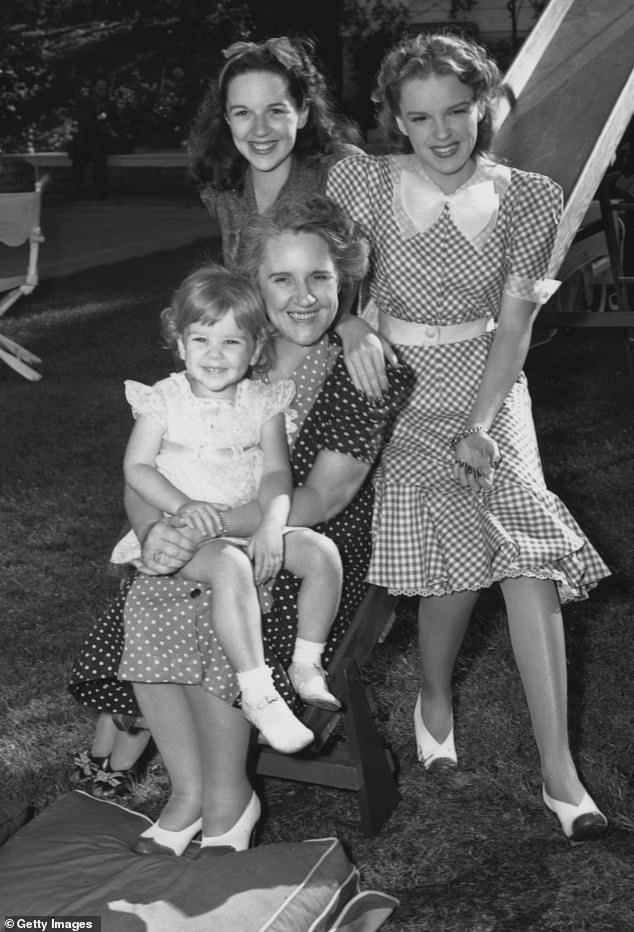
Pictured: Judy with her mother Ethel Marion Gumm , her sister Dorothy Virginia Gumm and Jimmie's daughter, in 1940

Judy and her sister Mary Jane Gumm and Dorothy Virginia Gumm are seen in a promotional portrait for their musical trio The Gumm Sisters, circa 1935

Judy's mother Ethel (seen together is 1938) was determined for her daughter to find success as a performer
In 1935, her ambitious father, Frank Gumm, took Baby Gumm to see studio mogul, cigar chomping czar Louis B. Mayer at Metro-Goldwyn-Mayer's casting office.
She stood 4'11' tall at age thirteen and began to sing. She was signed to a contract and stepped inside the largest and most glamorous dream factory and would stay with them until 1950.
Garland began schooling with stars Mickey Rooney, Ava Gardner, and Elizabeth Taylor. She wasn't in their league of looks, but they couldn't sing like she could.
She said: 'When I was at Metro, I don't think I was much over 12-years-old, and they didn't know what to do with me because they wanted you either five-years-old or eighteen with nothing in between.
'Well, I was in between, and so was little Deanna Durbin. We just went to school every day and wandered around the lot. Whenever the important stars had parties, they called the casting office and said, 'Bring those two kids'.
'We would be taken over and we would wait with the servants until they called us into the drawing room where we'd perform. We never got five hundred quid, though. We got a dish of ice cream, and it would always be melted'.
Garland was cast in movies to sing, dance and act and she was around all the big stars on the studio lot -- Norma Shearer, Clark Gable, Robert Taylor, Myrna Loy, Katharine Hepburn, and Joan Crawford.
MOLESTED ON THE WIZARD OF OZ SET
Judy's rise to fame is credited to her playing Dorothy in the Wizard of Oz, but the making of the film was a difficult process for the then-teenage actress.
Molested both by studio bosses and the Munchkins – natives of Oz – and forced to accept an oppressive regime to keep her weight down and look younger, her already shaky mental health never recovered as she descended into drug and alcohol abuse.
Her tragically premature death at only 47 – from an apparently accidental overdose of barbiturates while she was in London in 1969 – is widely blamed on the film's toxic legacy.
Garland had signed to Metro-Goldwyn-Mayer (MGM) production company at the tender age of 13, although her pushy mother had started giving her pills for energy, and to help her sleep, when Garland was just ten.
That insidious trend accelerated once she got into the clutches of a ruthless Hollywood studio.
MGM chiefs fretted continually about her weight and would deprive her of food, leaving her perpetually hungry.
One studio executive told her: 'You look like a hunchback. We love you but you're so fat you look like a monster.' Another called her a 'fat little pig with pigtails'.
MGM's callous behavior left Garland with a life-long insecurity about her figure. She was seeing psychiatrists by the age of 18.

Celebrated for its pioneering use of technicolor, The Wizard of Oz was the most expensive movie ever made on its release and, according to the US Library of Congress, it is the most-seen film of all time

Dorothy was memorably played by a teenager Judy Garland, for whom making the movie involved anything but sexual empowerment
The studio pushed drugs on the teenager, encouraging her to take amphetamines, known in the business as 'pep pills', to keep her slim and energetic through a relentless filming schedule. MGM also gave Garland sleeping pills to calm her down at night.
'Speed her up, slow her down,' said a studio insider who boasted Garland was 'run like a clock'.
The studio's concern over her appearance increased when she was given the role of Dorothy, who is meant to be 12. Garland, who was 16 when she got the part and a year older by the time filming was over, was told she needed to lose 12 pounds.
In addition to the strict diet of chicken soup, black coffee, 80 (appetite-suppressing) cigarettes per day, diet pills and more amphetamines, Garland had to wear a corset on-set which not only pulled in her stomach but held down her breasts.
Garland claimed – surely not seriously – that the contraption was made of iron.
Around the time she started making the movie, studio execs began molesting the actress, groping, and propositioning her for sex.
MGM chief Louis Mayer liked to show that he thought she sang from the heart by putting his hand on the teenager's left breast.
'I often thought I was lucky that I didn't sing with another part of my anatomy,' Garland later recalled.

Although some have insisted they assaulted Garland, the munchkin actors have become mired in other notoriety over the years for their wild behavior

After shooting finished, for instance, producer Mervyn LeRoy recalled how, 'they had orgies in the hotel and we had to have police on about every floor'
'Having sex with the female help was regarded as a perk of power and few women escaped the demands of Mayer and his underlings,' Garland's biographer Gerald Clarke observed.
Victor Fleming, one of five directors brought in to make the movie over five months of shooting, once tired of Garland's failure to stop laughing while shooting a scene and slapped her in the face.
He, at least, was ashamed of his behavior and told the crew to punch him in the face in return, only for Garland to kiss him instead.
The diminutive actors hired to play the munchkins could not have reached her face to slap it, but they could, and allegedly did, put their hands up her skirts.
According to Garland, the adult thespians, who mainly suffered from dwarfism, were hardly the sweet and innocent race of 'Ozians' they portrayed on camera.
'They would make Judy's life miserable on set by putting their hands under her dress,' wrote Sid Luft, her former husband, in a 2017 posthumous memoir. 'The men were 40 or more years old. They thought they could get away with anything because they were so small.'
Although some have insisted they assaulted Garland, the munchkin actors have become mired in other notoriety over the years for their wild behaviour.
After shooting finished, for instance, producer Mervyn LeRoy recalled how, 'they had orgies in the hotel, and we had to have police on about every floor'.
Speaking in 1967, Garland recalled: 'They were little drunks. They got smashed every night and the police used to scoop them up in butterfly nets.'
She said she also once agreed to go on a date with one of them but brought her mother as a chaperone.
'Fair enough, two broads for the price of one,' quipped the munchkin.
FAILED RELATIONSHIPS
Garland's first four marriages each ended in bitter divorces.
She was just 19 when she married first husband David Rose in 1941. She claimed that her mother and MGM forced her to abort Rose's child that year.
Garland and Rose agreed to a trial separation in 1943. She had an affair with actor Tyrone Power that year and ultimately aborted a resulting pregnancy.
The year after her divorce from Rose was finalized, Garland married Vincente Minnelli, her director in Meet Me In St Louis, in 1945. They welcomed daughter Liza in 1946.
During that marriage, Garland suffered her first public nervous breakdown and was subsequently hospitalized in April 1949. She attempted suicide three months later.
Garland was released from MGM in 1950 after her personal struggles prevented her from fulfilling the terms of her contract with the studio where she'd worked for 15 years.
She made a comeback in 1951 with a four-month vaudeville-style concert tour in front of sold-out audiences across Britain and Ireland.
Garland and Minnelli divorced that year and she married her concert tour manager Sidney Luft in the summer of 1952.

Baby Liza Minnelli with her mother Judy and father, film director Vincente Minnelli, in Hollywood California, April 1947
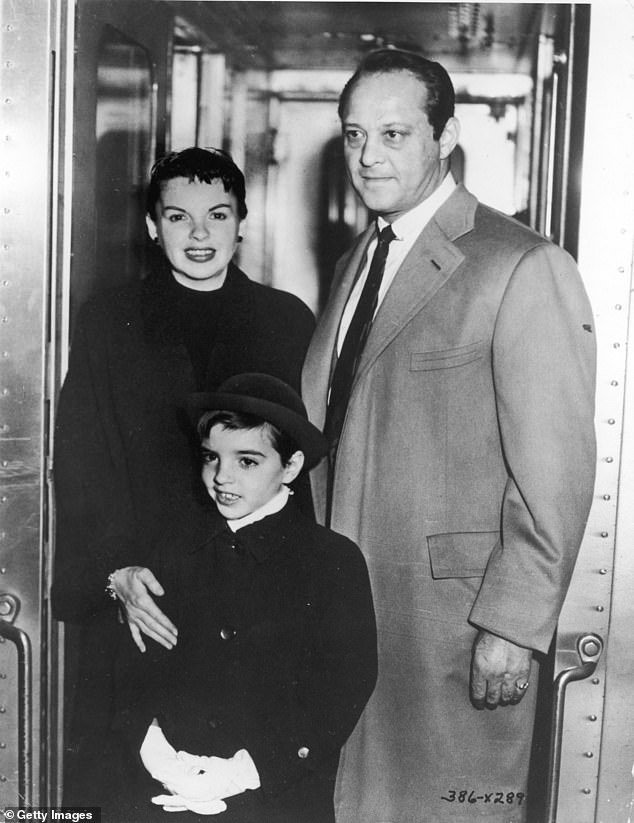
Pictured: Sidney Luft, Judy, and her daughter Liza Minnelli at the premiere of the film 'A Star is Born,' in which Garland starred and Luft produced

Garland married the promoter - Mark Herron - in Las Vegas, 1965 (pictured), but they separated six months later

Judy and her fifth husband Mickey Deans are seen celebrating their marriage, which took place at Chelsea Registry Office
The couple welcomed daughter Lorna in 1952. She slipped into post natal depression and her drug use reached new heights.
Soon after, husband Sidney was told that Judy was found unresponsive on the bathroom floor after cutting her neck with a razor blaze, according to The Sun.
Doctors saved her and performed an emergency blood transfusion in her bedroom. She covered the wound with a string of pearls from Saks.
In 1954 Garland appeared in one of her most famous roles as Ester in A Star Is Born, which she and Luft produced together. Garland was nominated for the Academy Award for Best Actress but lost out to Grace Kelly's A Country Girl.
In 1955, Garland pivoted to the small screen, appearing in a number of television specials, including The Judy Garland Show, which received four Emmy nominations.
Shortly after The Judy Garland show went off the air in 1963, Garland sued her second husband Luft for divorce, citing mental cruelty.
She claimed that he had repeatedly struck her while he was intoxicated and that he attempted to take their two children away from her. The divorce was finalized in 1965.
At the end of her TV stint Garland returned to the stage, at which point her struggles with substance addiction became more acute.
She went on tour in Australia in 1964 and was booed off the stage during her third show in Melbourne by an angry crowd that suspected she was drunk.
Garland married the promoter for that tour - Mark Herron - in 1965, but they separated just six months later.
During their divorce, Garland testified that Herron had beaten her, while Herron said he only hit her in self defense.
ADDICTION STRUGGLES
Once one of the most revered actresses on the planet, Garland was broke, addicted to pills, sex obsessed and suicidal when she was found dead from a barbiturates overdose in London in 1969 at the age of 47.
In her final months, the Wizard of Oz actress married her fifth husband, Mickey Deans, became embroiled in a bitter legal battle over a performance contract and delivered several barely coherent performances at a London night club that were described as an 'emotional car crash'.
Photographs from that turbulent time show Garland smiling alongside Deans as they cut the cake at their wedding and dazzling press photographers in elaborate stage-ready ensembles.
The images were unearthed ahead of the biopic Judy, in which Renee Zellweger portrays Garland's struggle to reclaim her career as her world crumbled around her.
The most important figure in Garland's life at the time of her death was Deans, an American musician whom she married three months before she died.
The pair met in 1966 when a mutual friend apparently asked Deans to pose as a doctor and deliver a package of stimulant tablets to Garland's hotel room in New York.
They dated on and off for three years before marrying in March 1969 in a poorly-attended ceremony at London's Chelsea Register Office that one journalist described as 'pathetic'.
At the end of her TV stint Garland returned to the stage, at which point her struggles with substance addiction became more acute.
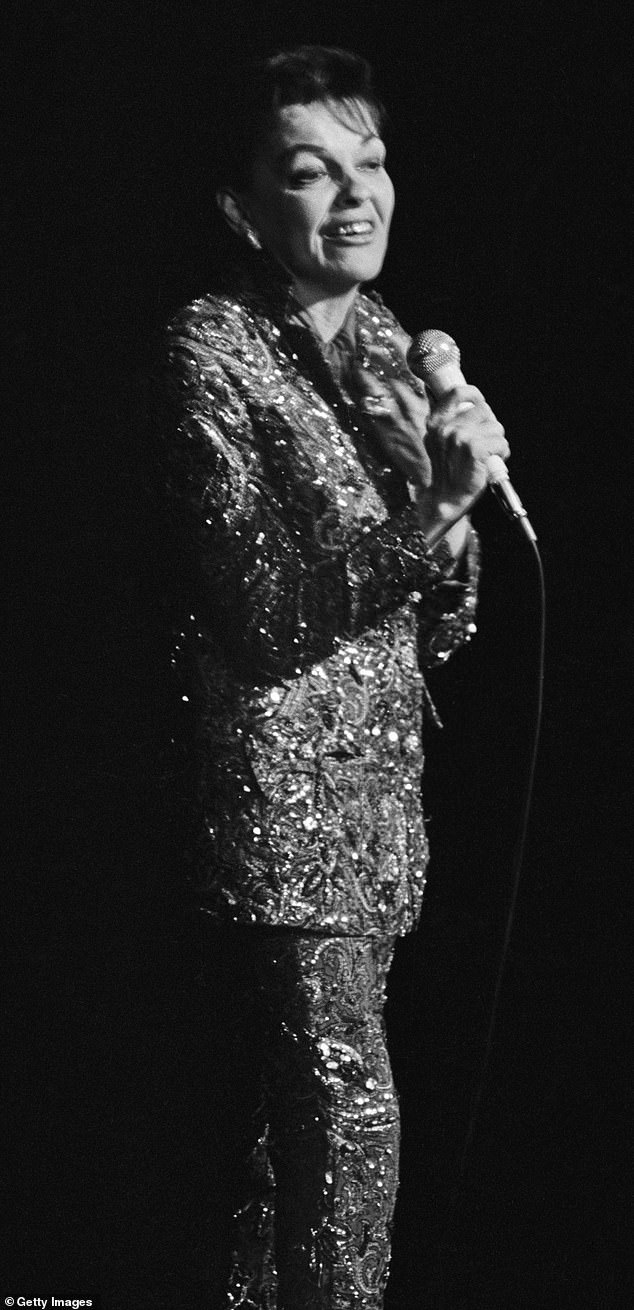
Pictured: Judy Garland performing at The Talk of the Town nightclub, Charing Cross Road, London, 31 December 1968

A poor performance in January 1969 saw Judy struggling through her signature song, "Over the Rainbow," and the audience pelted her with bread sticks and cigarette butts. Six months later she was dead from an accidental overdose
She went on tour in Australia in 1964 and was booed off the stage during her third show in Melbourne by an angry crowd that suspected she was drunk.
Garland married the promoter for that tour - Mark Herron - in 1965, but they separated just six months later.
During their divorce, Garland testified that Herron had beaten her, while Herron said he only hit her in self defense.
Garland's daughter Liza Minnelli is believed to have called her on the wedding day and told her that she couldn't attend, but that she'd make it to the next one.
The troubled starlet wasn't fazed, however, declaring that night: 'Finally, finally I am loved.'
Garland's other daughter Lorna said that by that point her mother was at the lowest point of her prescription drug addiction and 'dying in front of [Dean's] eyes'.
Three months later, Deans found Garland dead of a barbiturate overdose at the home they were renting.
Her death was ruled an accident, but friends and conspiracy theorists alike would later speculate that Deans had a hand in the overdose.
Many thought that he was taking advantage of her fame, given that he was 12 years her junior.
In 1972 Deans published a book - Weep No More, My Lady - about his time with Garland.
He later moved back to the US and died aged 68 of congestive heart failure in 2003.








